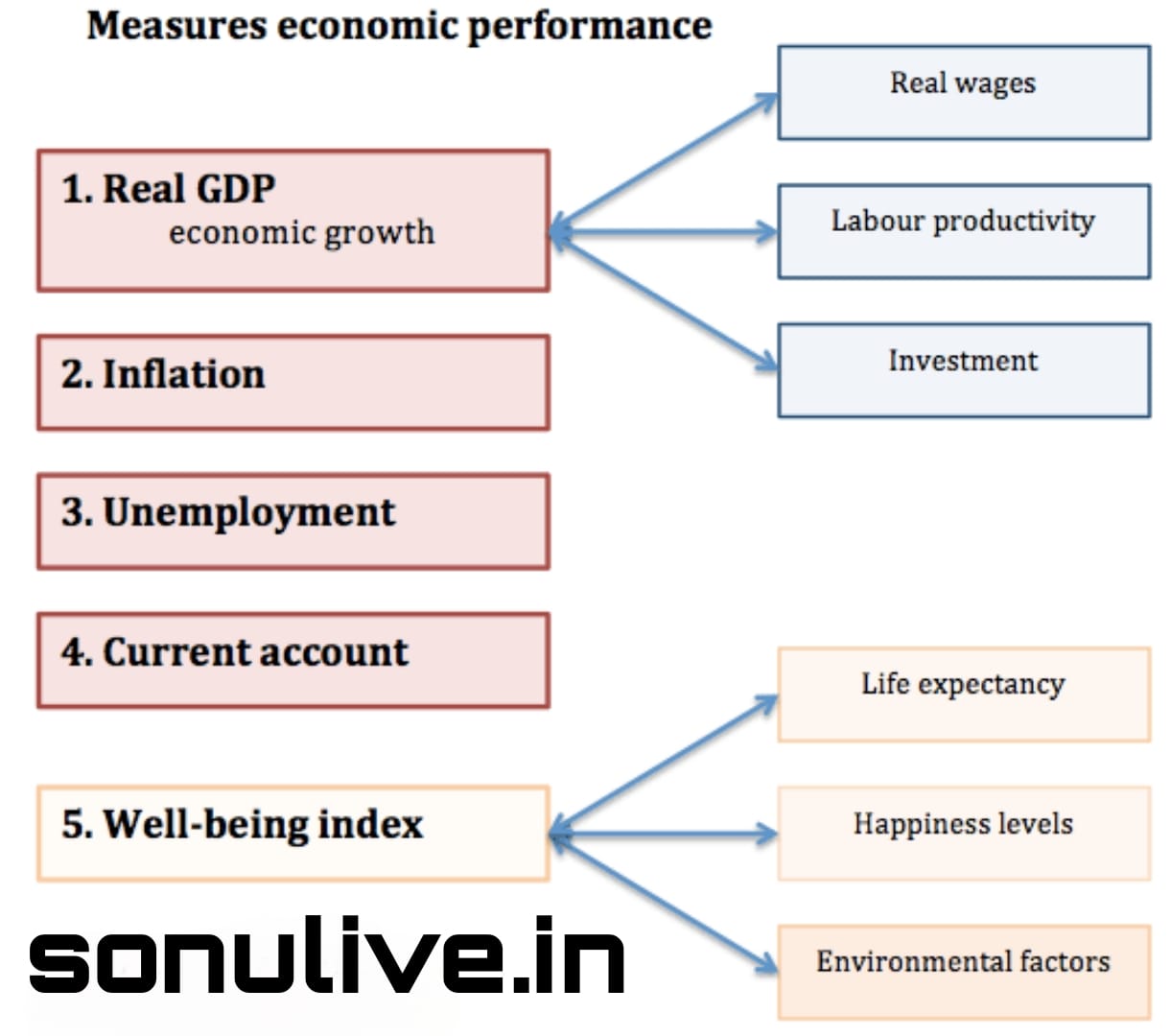Hello friends welcome to Sonu live ,in this article I’m going to tell you about Distribution of Economic Growth and explain the measures of Economic Growth which should be based on current data and Government policies.
Measuring Economic Growth in India: Current Data and Government Policies
Assessing economic growth requires a multifaceted approach, considering various indicators beyond just a single headline number. In India’s context, current data and government policies offer valuable insights into the economy’s health and potential future trajectory. Here are some key measures to consider:
Traditional Measures:
- Gross Domestic Product (GDP): The total market value of all final goods and services produced within a country in a given year. India’s GDP growth is estimated at 7.2% for FY 2022-23 and projected to be around 7% for FY 2023-24. While a high GDP growth rate indicates a thriving economy, it’s crucial to analyze its distribution and inclusivity.Opens in a new windowwww.researchgate.netGross Domestic Product (GDP) of India
- Gross National Product (GNP): Similar to GDP but includes income earned by Indian residents from foreign investments. GNP provides a more comprehensive picture of national income but is less commonly used compared to GDP.
Sectoral Performance:
- Agriculture: India’s agricultural sector contributes about 18.4% to GDP and employs a large portion of the workforce. Monitoring agricultural output, crop prices, and farmer income is crucial for rural development and overall economic stability.Opens in a new windowbyjus.comAgriculture sector of India
- Industry: The industrial sector, including manufacturing and construction, contributes about 28.3% to GDP. Tracking industrial production, capacity utilization, and foreign direct investment in this sector is essential for gauging industrial growth and job creation.Opens in a new windowwww.india-briefing.comIndustry sector of India
- Services: The dominant sector, accounting for 53.3% of GDP, encompasses diverse activities like IT, finance, healthcare, and tourism. Monitoring growth in these sub-sectors and their contribution to exports is vital for sustained economic expansion.Opens in a new windowwww.ibef.orgServices sector of India
Human Development Indicators:
- Employment: The unemployment rate and labor force participation rate are crucial indicators of economic inclusivity and well-being. India’s unemployment rate remains a concern, and policies promoting job creation and skilling are essential.
- Poverty: Poverty reduction is a key objective of Indian government policies. Tracking poverty rates and the effectiveness of poverty alleviation programs like MGNREGA is crucial for inclusive growth.
- Education and Healthcare: Investments in education and healthcare infrastructure are critical for long-term economic growth and human capital development. Monitoring literacy rates, healthcare access, and quality is essential.
Government Policies:
- Atmanirbhar Bharat Abhiyan (Self-reliant India Mission): This initiative aims to boost domestic manufacturing, reduce dependence on imports, and enhance India’s global competitiveness. Its impact on various sectors and overall economic growth needs to be assessed.Opens in a new windowwww.chronicleindia.inAtmanirbhar Bharat Abhiyan
- Digital India: This initiative promotes digital literacy, infrastructure development, and e-governance. Its success in bridging the digital divide and driving innovation in various sectors will be crucial for future economic growth.Opens in a new windowtwitter.comDigital India initiative
- Sustainable Development Goals (SDGs): India’s commitment to achieving the SDGs by 2030 necessitates monitoring progress on various fronts like poverty eradication, clean energy, and climate change. Integrating these goals into economic policies is essential for sustainable growth.
Data Sources:
- Ministry of Statistics and Programme Implementation (MOSPI)
- Reserve Bank of India (RBI)
- National Sample Survey Organisation (NSSO)
- World Bank
- International Monetary Fund (IMF)
By analyzing these diverse measures and their interplay with government policies, we can gain a comprehensive understanding of India’s economic growth story. It’s important to remember that no single metric paints the full picture, and a nuanced approach is necessary to assess the true health and future prospects of the Indian economy.
Read More-https://sonulive.in/all-sdgs-goals/

